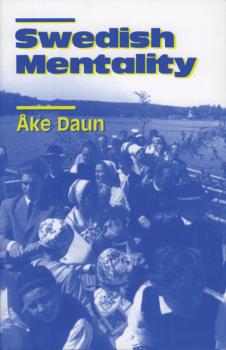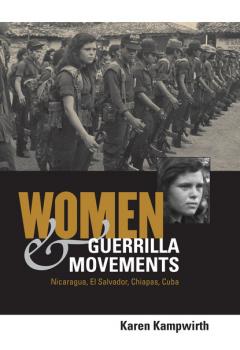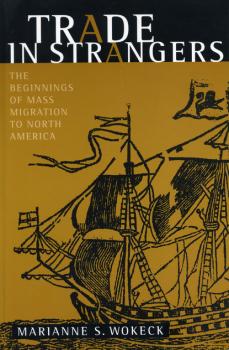ТОП просматриваемых книг сайта:
Историческая литература
Различные книги в жанре Историческая литература, доступные для чтения и скачиванияАннотация
The minimum of violence accompanying the success of the American Revolution resulted in large part, argues this book, from the conditions of law the British allowed in the American colonies. By contrast, Ireland's struggle for independence was prolonged, bloody, and bitter largely because of the repressive conditions of law imposed by Britain. Examining the most rebellious American colony, Massachusetts Bay, Professor Reid finds that law was locally controlled while imperial law was almost nonexistent as an influence on the daily lives of individuals. In Ireland the same English common law, because of imperial control of legal machinery, produced an opposite result. The Irish were forced to resort to secret, underground violence. The author examines various Massachusetts Bay institutions to show the consequences of whig party control, in contrast to the situation in 18th-century Ireland. A general conclusion is that law, the conditions of positive law, and the matter of who controls the law may have more significant effects on the course of events than is generally assumed.
Аннотация
Is there a distinctly Swedish national character? Are Swedes truly shy, unemotional, conflict-avoiding, melancholy, and dour? Swedish Mentality , the English translation of the hugely successful book published in Sweden in 1989, considers the reality behind the myth. The author, Åke Daun, is a respected ethnologist who is sometimes referred to as the "guru" of Swedish character. In recent years, it has become popular to discuss Swedishness and Swedish identity. The advent of the European Union and the increasing presence of immigrant refugees in Sweden have fueled public debate on the distinctiveness of Swedish culture. Daun, however, goes beyond stereotype, drawing upon statistics gathered over more than a decade of research. The result is an entertaining and engagingly written book. Throughout, Daun quotes from interviews with native Swedes and immigrants as well as from travel accounts, folklore, and proverbs. We learn why some Swedes might prefer to walk up a flight of stairs rather than share an elevator with a neighbor and why some gain satisfaction from walking alone in the woods or going fishing. Daun describes a range of factors influencing Swedish character, including population composition, rural background, and even climate. He recognizes behavioral variations related to gender, age, class, and region, and he considers subtleties of individual character as well. Swedish Mentality should interest a wide array of readers, whether of Swedish descent or not.
Аннотация
While there is much literature analyzing the politics of implementing economic reforms, very little has been written on the social and political consequences of such reforms after they have been implemented. The basic premise of this book is that the convergence of many social, economic, and political ills (such as high levels of poverty, income inequality, criminal violence, and the growth of the informal sector) in the context of unprecedented levels of political democratization in Latin America presents a paradox that needs to be explained. What Kind of Democracy? demonstrates how the myriad social problems throughout the region are intimately linked both to a new economic development model and the weaknesses of Latin American democracy. This volume brings together prominent scholars from Canada, the United States, and Latin America, representing several different disciplines to analyze ongoing processes of economic, social, and political change in the region. The contributors are Werner Baer, Manuel Barrera, Juan Alberto Fuentes, Yoshiaki Nakano, Claudio Paiva, Luiz Carlos Bresser Pereira, Jean-François Prud'homme, Jorge Schvarzer, Francisco Weffort, and Francisco Zapata.
Аннотация
A discussion by a broadly respected authority of the complicated relationship between theology and ordinary life in the early church. The first section of the book scrutinizes theology with a view to understanding its bearing upon Christian understandings of life (the theological “stories” of Irenaeus, Gregory of Nyssa, and Augustine). The second section examines aspects of ordinary life and explores how Christians related them to religious ideas (the family, hospitality, citizenship, monasticism, and attitudes toward the collapse of the Roman Empire in the West). 	This very learned piece of work, which reflects lengthy study of original texts as well as of the current and important secondary literature, is distinctive because it does not conform to the present reigning ideology: The author writes as a convinced Christian thinker. He believes that there is no such thing as a purely detached observer and that the best way of being critical and fair is to make no secret of one’s presuppositions, but to face them so as to be able to discount them when necessary. This quality makes the work interesting and suggestive. The book is of importance to scholars and theologians and to all concerned with the early church.
Аннотация
The revolutionary movements that emerged frequently in Latin America over the past century promoted goals that included overturning dictatorships, confronting economic inequalities, and creating what Cuban revolutionary hero Che Guevara called the "new man." But, in fact, many of the "new men" who participated in these movements were not men. Thousands of them were women. This book aims to show why a full understanding of revolutions needs to take account of gender. Karen Kampwirth writes here about the women who joined the revolutionary movements in Nicaragua, El Salvador, and the Mexican state of Chiapas, about how they became guerrillas, and how that experience changed their lives. In the last chapter she compares what happened in these countries with Cuba in the 1950s, where few women participated in the guerrilla struggle. Drawing on more than two hundred interviews, Kampwirth examines the political, structural, ideological, and personal factors that allowed many women to escape from the constraints of their traditional roles and led some to participate in guerrilla activities. Her emphasis on the experiences of revolutionaries adds a new dimension to the study of revolution, which has focused mainly on explaining how states are overthrown.
Аннотация
Creating the Constitution presents a different interpretation of the Convention and the First Congress, derived largely from a close reading of Farrand's Records and the Annals of Congress . Among its special features are a critical perspective on the Framers, an examination of Court Whig influence on the Federalists, the identification of a third group—the state Federalists—between the nationalists and states' righters, and a view of the First Congress as distorting the aims of the Convention.
Аннотация
Killing Detente tells the story of a major episode of intelligence intervention in politics in the mid-1970s that led to the derailing of detente between the Soviet Union and the United States and to the resurgence of the Cold War in the following decade. Although the basic outlines of the story are already known, Anne Cahn succeeded in getting many previously declassified documents released and uses these, supplemented by seventy interviews with principal players, to add much greater depth and detail to our understanding of this troubling event in U. S. history. In the mid-1970s a very controversial intelligence estimate was performed by people outside the government. They were given access to our most secret files and leaked their report to the press when Jimmy Carter was elected president. This study, which became known as "The Team B Report," became the intellectual forbearer of the "window of vulnerability" and led to the demise of detente between the Soviet Union and the United States. Team B was the fundamental turning point in renewing the Cold War in the 1980s. The debate over the leaked report moved the center of arms control policy strongly to the right from where it had been during the years of detente. Team B presaged the triumph of Ronald Reagan and a military buildup on a scale unprecedented in peacetime that left present and future generations with the most crippling debt in our nation’s history. This book is about attempts to destroy improved relations between the United States and the Soviet Union in the 1970s. Those opposed to the easing of tensions between the two countries used every means available, including accusing the Central Intelligence Agency of understating the threat posed by the Soviets. Charging the CIA this way seems preposterous now.
Аннотация
American historians have long been fascinated by the "peopling" of North America in the seventeenth century. Who were the immigrants, and how and why did they make their way across the ocean? Most of the attention, however, has been devoted to British immigrants who came as free people or as indentured servants (primarily to New England and the Chesapeake) and to Africans who were forced to come as slaves. Trade in Strangers focuses on the eighteenth century, when new immigrants began to flood the colonies at an unprecedented rate. Most of these immigrants were German and Irish, and they were coming primarily to the middle colonies via an increasingly sophisticated form of transport. Wokeck shows how first the German system of immigration, and then the Irish system, evolved from earlier, haphazard forms into modern mass transoceanic migration. At the center of this development were merchants on both sides of the Atlantic who organized a business that enabled them to make profitable use of underutilized cargo space on ships bound from Europe to the British North American colonies. This trade offered German and Irish immigrants transatlantic passage on terms that allowed even people of little and modest means to pursue opportunities that beckoned in the New World. Trade in Strangers fills an important gap in our knowledge of America's immigration history. The eighteenth-century changes established a model for the better-known mass migrations of the nineteenth and twentieth centuries, which drew wave after wave of Europeans to the New World in the hope of making a better life than the one they left behind—a story that is familiar to most modern Americans.
Аннотация
The history of the Diocese of Pennsylvania is in many ways a history of the Episcopal Church at large. It remains one of the largest and most influential dioceses in the national church. Its story has paralleled and illustrated the challenges and accomplishments of the wider denomination—and of issues that concern the American people as a whole. In This Far by Faith , ten professional historians provide the first complete history of the Diocese of Pennsylvania. It will become essential reading for anyone wishing to understand the history and significance of the Episcopal Church and of its evolution in the Greater Philadelphia area. Aside from the editor, the contributors are Charles Cashdollar, Marie Conn, William W. Cutler III, Deborah Mathias Gough, Ann Greene, Sheldon Hackney, Emma J. Lapsansky-Werner, William Pencak, and Thomas F. Rzeznik.
Аннотация
At the end of the eighteenth century, the authors of Poland’s 3 May 1791 Constitution became the heirs to a defunct state whose territory had been partitioned by Russia, Prussia, and Austria. At this moment of intensive national postmortem, Ignacy Potocki, an eminent statesman and co-author of the Constitution, wrote the treatise Remarks on Architecture . One of the best-preserved examples of early modern Polish architectural thought, Potocki’s work announces itself as a project of national introspection, with architecture playing a direct role in the betterment of the nation. Addressed to the contemporary Polish nobility, the book argues that architecture is a vessel for cultural values and that it plays an important part in the formation and critique of broader national traditions. Throughout, Potocki conveys the lessons of a Vitruvian canon that shaped Continental classical architectural theory and practice throughout the early modern period. Expertly translated by Carolyn Guile and featuring an introduction that explores Polish Enlightenment architectural writing as an example of cultural exchange, inheritance, and transformation, this edition of Potocki’s treatise broadens our understanding of European architectural history during the early modern period.










